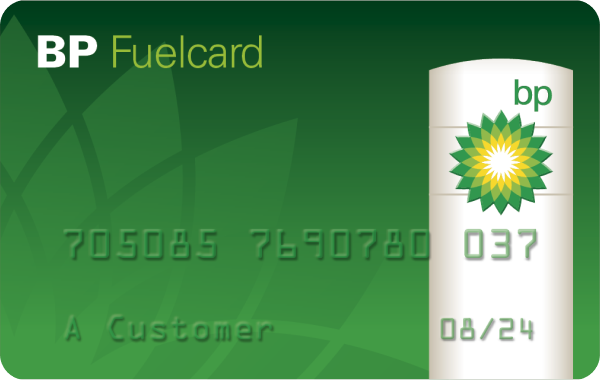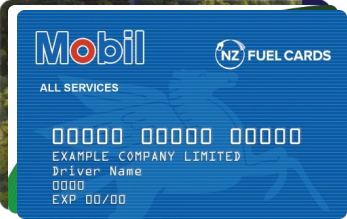Automatically Save On Business Fuel Costs

CardSmart
- Most widely accepted fuel card in NZ
- Can use card for non-fuel services
BP Fuel Card
- Use at 400+ stations across NZ
- Pay for fuel via BPMe App
- Card works at BP, G.A.S & RDP
Allied Fuel Card
- Over 250 Allied stations NZ-wide
- No monthly card fees
- Run co-branded card with Mobil
Driveline Fuel Card
- Apply as an individual or business
- Good fixed petrol & diesel discount
- No monthly card fees
Gull Fleetcard
- Use at BP, Caltex, Mobil & more
- Pump price savings based on individual fuel usage
- Use to purchase taxi fares, servicing & more
NPD Fuel Card
- Great ongoing pump price discount
- NPD/Mobilcard co-brand card available
- Cost $5 to procure each card + ongoing card fee
RD Petroleum Fuel Card
- Use at RDP, BP or G.A.S stations
- No card or transaction fees
- No need to be a registered business to apply
NZ Fuel Cards
- Budget friendly card offering
- Obtain card for BP, Caltex, Mobil or Z
- No joining or transaction fees
Waitomo Fuel Card
- Commercial app for fast easy payment
- No card or transaction fees
- Receive tailored commercial rates
Z Business Plus
- Use at Z, Caltex & Challenge stations
- Earn Flybuys or Airpoints Dollars
- Great fixed savings
Find the best fuel card for small and personal use in New Zealand
We set this website up to help people choose after extensive research ourselves in helping a client choose the right fuel card for their tourism business.
1. Important considerations
Promo periods – Ask if the offer you’re signing up to is a promo period and what the regular prices may be. What’s being advertised can often be a promo for new customers that only lasts a few months which returns to ‘regular’ pricing.
Discount Types – There are two types of discounts. Pump price and national price.
The pump price is what you see at advertised at the station. So if it’s advertised at $2.28 and you have 8c off, it becomes $2.20/l. Simple.
The national price is the average of all the fuel prices. Different cards have different ways to calculate this so it could be from the national average of their group of suppliers or one brand. This means means the price you see at the pump is not what you’re actually paying for and can be higher or lower depending on the location. We’ve only seen this used by BP.
Discount partners – Just because a particular fuel card can be used at all the fuel stations doesn’t mean you get the same discount across them all. Sometimes there are specific brands the discounts apply too. So if you lean towards fueling at a particular brand, make sure you clarify that the discount (if any) applies to the brands you use.
GST Cost – Most companies advertise without GST so it’s just an important note for comparative purposes.
Transaction fees – If you have a discount of 8c/l but each time you use the card to pay you’re hit with a transaction cost of $2 it offsets some of that discount – 25liters in this particular example, which means for an average car with a 55 litre tank, you save $2.40 instead of $4.40 each time you fill up.
Payment fees and methods – What are their terms around payment and late fees? If you’re like us and enjoy earning points on your credit card it’s worthwhile finding out what the transaction fees are and whether they’re accepted at all. For us our preference has always been the ability to pay the entire bill with our AMEX card for points which also extends our cashflow. In a scenario where we fill up twice a week (assume 55l tank and pay $2.20/l), it costs us a little over $12,500 in fuel costs per year per car. Multiply that by a fleet size of 10 and we have 125,000 points a year which is enough for a RETURN business class flight to Singapore for a cost of $3,146 in transaction fees (assumes 2.5% processing fee) which is a great discount over the normal business class tickets and paid entirely by business transactions.
Size of fleet – The larger your fleet the more attractive you are to fuel providers so they’re more likely to give you a special deal to lock in your business. This is usually based on your total fuel spend and the number of cards.
2. Comparing the top fuel card providers in New Zealand
Offerings between each can get confusing quickly with a variety of different options.
For simplicity we categorised them into two types:
- Fuel station operated cards (like BP operating a BP Card)
- Card operators (like Cardsmart)
The difference between the two came mainly down to this:
- If you want to save money, it’s cheaper to check if your preferred fuel brand has a card to use on their own network.
- If you want the freedom to use your card at different stations and other non-fuel stations like car washes, servicing, etc then independent card operators is the best choice.
With so many fuel card providers and each offering two or more cards we opted to show their offerings based on fuel stations. By doing it this way you can see how each card from different fuel card providers compare against each other for use at the main fuel brands.
3. Table of fuel station acceptance
| # | CARDFUELSTATIONS |

BP |

CALTEX |

MOBIL |

RDP |

NPD |

GULL |

Z |

WAITOMO |

CHALLENGE |

G.A.S |
|---|---|---|---|---|---|---|---|---|---|---|---|
| 1 | Gull Fleetcard |

|

|

|

|

|

|

|

|
||
| 2 | CardSmart |

|

|

|

|

|

|

|

|
||
| 3 | NZ Fuel Cards |

|

|

|

|

|
|||||
| 4 | Driveline Fuel Card |

|

|

|

|
||||||
| 5 | RD Petroleum Fuel Card |

|

|

|
|||||||
| 6 | BP Fuel Card |

|

|

|
|||||||
| 7 | Kiwi Fuelcard |

|

|

|
|||||||
| 8 | Z Business Plus |

|

|

|
|||||||
| 9 | NPD Fuel Card |

|

|
||||||||
| 10 | Waitomo Fuel Card |

|
|||||||||
| 11 | Allied Fuel Card |
4. Special mentions
CardSmart
Operates as a dedicated fuel card provider that gives drivers the widest range of fuel stations with over 1,100 sites accepting the card. Their discount partners are BP, Caltex, Z and GAS where 8c/l is offered in promo periods for new customers and a whopping 12c/l from Mobil. While the other larger networks like Gull accept the card no discounts are offered off the pump price.
Challenge
Officially Challenge has a community rewards card that gives discounts on fuel but is not a fuel card. Similarly if you’re a New Zealand senior citizen / veteran, you can enjoy 8c/l off when holding a SuperGold Card – again this is just a discount and not a fuel card.
They do however openly list Farmland branded Caltex Starcard that can be used at Challenge stations:
- Competitive discounts on pump pricing
- Convenient monthly payment
- PIN security
- No transaction fees
Challenge doesn’t have a fuel card and directs all users to Z.
RDP
Worth noting that it’s unclear whether the 12c/l discount applies to all 350+ sites within BP network or only RDP sites.
NZ Fuel Cards
Focused on saving you money NZ Fuel Cards don’t provide an all in one card, but do provide multiple cards depending on the station you choose to fill up at. You can save at least 10c/l by using one of their branded cars from BP, Z, Starcard or Mobil.
This means if you want to expand the network, you can have them provision you all 4 cards which you have to keep with you but they do give you a handy card wallet. It’s not the most elegant solution but their offering on paper is fantastic if you’re on a budget whilst not compromising too much on coverage.
Industry partnerships
There are more significant industry discounts if you have a Farm Source account which enables you to apply for their “SuperCard” which holds discounts of up to 16c for Mobil, 11c for Z Energy, 3c for BP and 6c for Caltex stations. See more: https://store.nzfarmsource.co.nz/partnerships/fuel-partners
Similarly if you’re a member of Farmlands you can save 12c per litre which is rebated to your Farmlands Account Statement (not a discount at the time of purchase which is why we have not included them in our table). See: https://www.farmlands.co.nz/Productsandservices/Farmlands-Fuel/StarCard/
If you’re a Farmland shareholder and after diesel, it might be worthwhile contacting them as they have negotiated exclusive discounts: https://www.farmlands.co.nz/Productsandservices/Farmlands-Fuel/Truck-stop-pricing-update/
Save Time. Save Money.

1. We learn how each fuel cards can help your business

2. You compare New Zealand's best fuel cards and offers
















